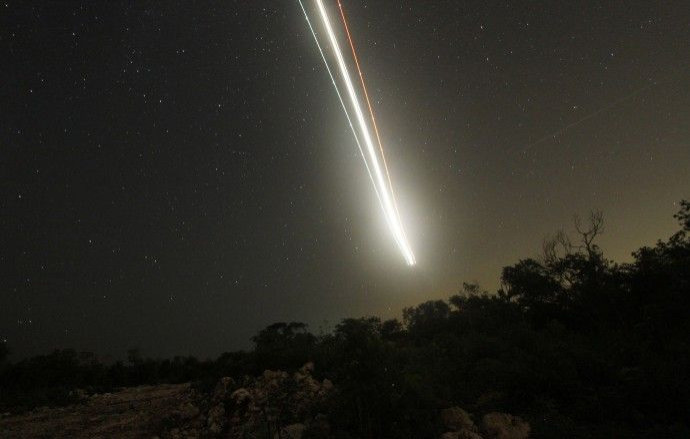NASA Scientists Find Meteorites Have Building Blocks Of Life

An international team of scientists studying remnants of an asteroid that crashed into the Nubian Desert found it had some of the same chemicals that are the building blocks of life on earth.
The asteroid, which fell to Earth in October 2008, contained at least 10 different types of meteorites. Chemists at Stanford University found that different meteorite types share the same distinct fingerprint of polycyclic aromatic hydrocarbons (PAHs). These complex organic molecules are distributed throughout the galaxy and form on Earth from incomplete combustion.
Another team at the Goddard Space Flight Center in Greenbelt, Md., found amino acids in strongly heated fragments of the asteroid, where all such molecules should have been destroyed. Both PAHs and amino acids are considered building blocks of life.
Before landing on Earth, the 13-foot asteroid was detected by a telescope from the NASA-sponsored Catalina Sky Survey based at the University of Arizona in Tucson. Hours prior to its demise, astronomers and scientists around the world tracked and scanned the asteroid. It was the first time a celestial object was observed prior to entering Earth's atmosphere.
Muawia Shaddad, an astronomer at the University of Khartoum, who led the search for the asteroid's fragments, said in a statement that only a small fraction of it survived to reach the surface. We estimate the asteroid initially weighed about 59 tons, of which about 86 pounds survived the explosion high in the atmosphere, he said.
Scientists determined most of the fragments are a rare type of meteorite called ureilites. Less than 10 of the nearly 1,000 known meteorites are ureilites. Examining the atomic signatures of the elements has convinced many astronomers that all urelites came from the same parent body, which they theorize experienced a giant collision approximately 4.5 billion years ago.
Researchers at NASA's Johnson Space Center in Houston were able to deduce that much of the ureilite parent body was reduced to fragments measuring 30 to 300 feet during this giant collision. After the catastrophic collision, scientists believe the material that ended up making the asteroid had a long history of violent collisions and impacts. These later collisions ground the fragments down into the smaller sand grain-sized pieces that gathered loosely together with many voids.
The researchers believe the amino acids were delivered to the asteroid during later impacts suffered by the fragments, or formed directly from trapped gases as the asteroid cooled following the giant collision.
Asteroids have just become a lot more interesting, said Peter Jenniskens, an astronomer at NASA's Ames Research Center, in a statement. We were surprised to find that not all of the meteorites we recovered were the same, even though we are certain they came from the same asteroid.
Astronomers have known asteroids orbiting the sun frequently are broken and reassembled during collisions, but until now they thought little mixing occurred because asteroids, or impactors that broke them apart, are usually very small.
© Copyright IBTimes 2024. All rights reserved.





















